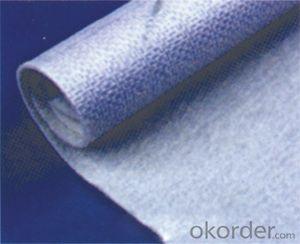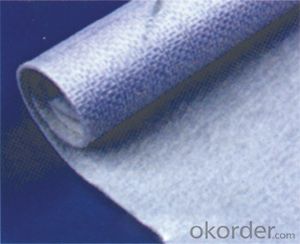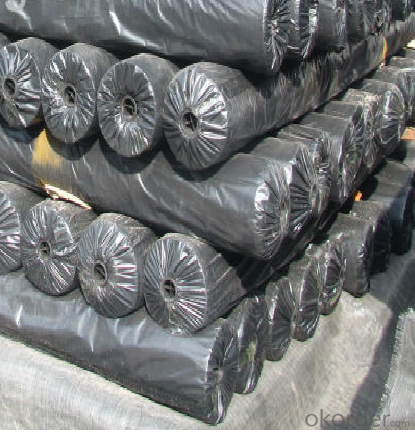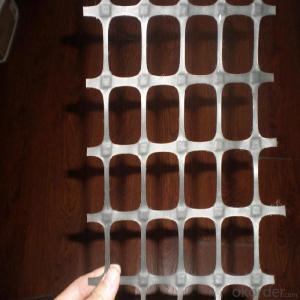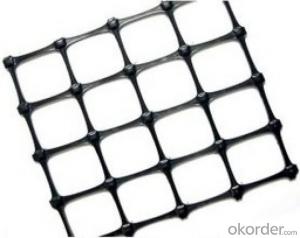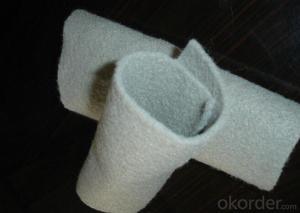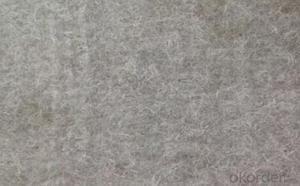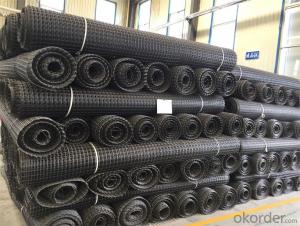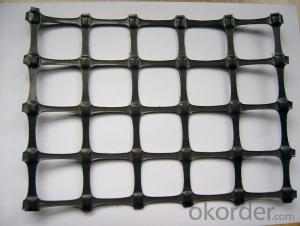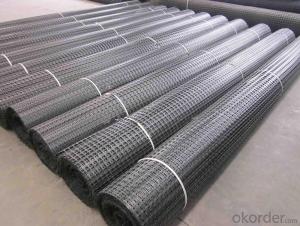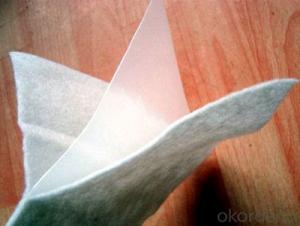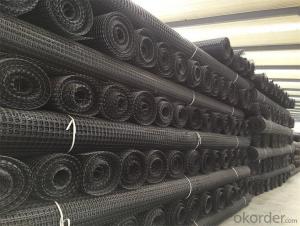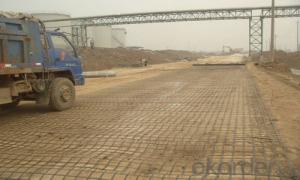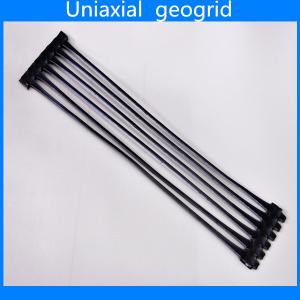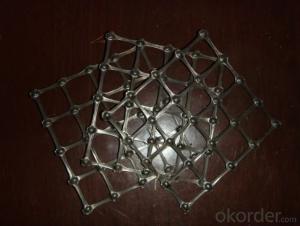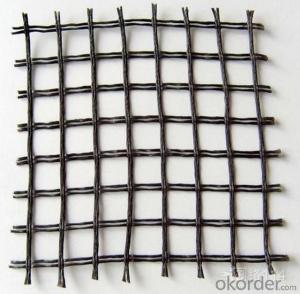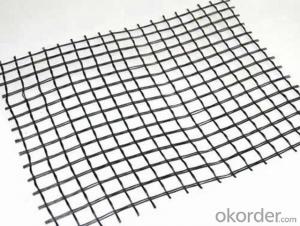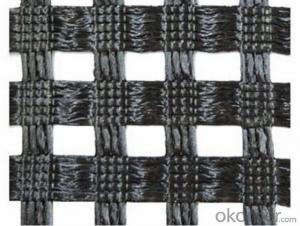Fibreglass Geogrids Reinforced Knitted Civil Construction Composite Geomembrane
- Loading Port:
- Qingdao
- Payment Terms:
- TT OR LC
- Min Order Qty:
- 1000 m
- Supply Capability:
- 50000 m/month
OKorder Service Pledge
OKorder Financial Service
You Might Also Like
Specifications
High strength, anti-corrosion, tearing resistant and bursting resistant.
High strength polyester industrial yarns are adopted and, after treated with PVC laminating process, the geomembranes are abtained. These membranes prevent the permeation of water and change the defects of the current geomembranes with low strength and poor water resistance. As a result, they are widely used in such projects as the railroad foundation, dyke protective slopes, reservoirs, highway greenery belts, etc.
Application
Railroad foundations, tunnels, dykes, reservoirs, garbage filling fields, water-prevention and anti-permeation projects. Anti-seepage works of dyke. And application in anti-seepage works of water canal can save 80% of water.
Features
High strength, anti-corrosion, tearing resistant and bursting resistant.
Technical Parameters of Composite Geomembrane
Specification | PLGM-2020 | |
Performance | ||
Strength (kN/m) | Longitudinal | 20 |
Horizontal | 20 | |
Elogation | 30% | |
CBR strength (KN) | >2.5 | |
Thickness (mm) | >0.3 | |
Penetration coefficient (cm/s) | 10-11 | |
Width (m) | 2.5-3.5 | |
Length (m) | 30-50 | |
Functions
Ground stabilization
Drainage
Erosion control and re-vegetation
Revetment
Ground reinforcement
Asphalt underlayment
Road reinforcement
Features
1) Woven geotextile made on circle weave machine
2) Materials: polypropylene and other imported new materials
3) Weight per square meter: 80-700g/m²
4) Width: max. 6m
5) Perfect flexibility and against ultraviolet radiation and aging.
It can be widely used in areas of railways, highways, sport fields, earthwork projects, tunnels, coal mines, walls and slopes, environmental protection, and so on.
All colors and sizes can be customized.
Applications
1-Construction of roads and other trafficked areas (excluding railways and asphalt inclusion)
2-Construction of railways,
3-Earthworks, foundations and retaining structures,
4-Use in drainage systems,
5-Erosion control works (coastal protection, bank revetments),
6-Construction of reservoirs and dams,
7-Construction of canals,
8-Construction of tunnels and underground structures,
9-Use in solid waste disposals,
10-Use in liquid waste containment projects,
Woven Geotextiles Data Sheet
Item | Testing Method | Unit | ||
Grad Tensile Strength | ASTM-D 4632 | N | 890 | 1405 |
Grab Elongation | ASTM-D 4632 | % | ≤20 | ≤20 |
Puncture Strength | ASTM-D 4833 | N | 400 | 667 |
CBR Puncture | ASTM-D 6241 | N | 3200 | 4800 |
Mullen Burst | ASTM-D 3786 | kPA | 2578 | 4137 |
Trapezoidal Tear | ASTM-D 4533 | N | 500 | 750 |
Apparent Opening Size | ASTM-D 4751 | mm | 0.425 | 0.425 |
Permittivity | ASTM-D 4491 | Sec-1 | 0.05 | 0.05 |
Water Flow Rate | ASTM-D 4491 | 1/m/m2 | 163 | 163 |
UV Resistance | ASTM-D 4355 | % 500hrs | 70 | 70 |
Roll Width | m | 6 | 6 | |
Roll Length | m |
100 | 100 | |
Mass | GSM | 200 | 300
|
- Q: Can geogrids be mechanically connected to other geosynthetics?
- Yes, geogrids can be mechanically connected to other geosynthetics through various methods such as stitching, welding, or using connector devices. These connections help enhance the overall performance and integrity of the geosynthetics system.
- Q: What is the recommended geogrid aperture shape for specific applications?
- The recommended geogrid aperture shape for specific applications varies depending on the specific requirements of the project. However, commonly used shapes include square, rectangular, and hexagonal apertures. These shapes provide different levels of stability, soil confinement, and load distribution, allowing engineers to select the most suitable option based on factors such as soil type, slope angle, and anticipated loads.
- Q: How do geogrids improve the performance of reinforced soil foundations?
- Geogrids improve the performance of reinforced soil foundations by providing additional strength and stability to the soil. They act as a reinforcement by distributing the load over a wider area, reducing the stress on the soil and preventing settlement or failure. Geogrids also improve the lateral stability of the soil, preventing lateral movement and potential sliding. Overall, they enhance the structural integrity and longevity of the reinforced soil foundation, making it more resistant to various external forces such as heavy loads or natural disasters.
- Q: Geogrid width mean?
- So width refers to the 1 meters to the value of 6 meters,
- Q: What are the factors to consider when designing with geogrids for reinforced soil walls?
- When designing with geogrids for reinforced soil walls, there are several key factors that need to be considered. These factors include the type and properties of the soil, the anticipated loads and stability requirements, the slope angle and height of the wall, the installation and construction process, and the long-term durability and maintenance of the geogrids. Additionally, factors such as environmental conditions, drainage requirements, and aesthetic considerations may also play a role in the design process. By carefully considering these factors, engineers can ensure that the geogrids are properly designed and implemented to provide effective reinforcement and stability for the soil wall.
- Q: How do geogrids improve the performance of bridge abutments?
- Geogrids improve the performance of bridge abutments by providing additional stability and reinforcement to the soil. They distribute the loads more evenly, prevent soil erosion, and increase the overall strength of the structure.
- Q: How do geogrids help in reducing the risk of landslides?
- Geogrids help in reducing the risk of landslides by providing reinforcement and stability to the soil. They are typically installed in layers within the ground to improve its strength and prevent movement. Geogrids act as a barrier, distributing the forces exerted by the soil and reducing the likelihood of slope failure. They increase soil cohesion and friction, enhancing the overall stability and preventing landslides from occurring or minimizing their impact.
- Q: Are geogrids suitable for use in mechanically stabilized bridge abutments?
- Yes, geogrids are suitable for use in mechanically stabilized bridge abutments. Geogrids provide reinforcement and stability to the soil, allowing for increased load-bearing capacity and reduced settlement. They are commonly used in bridge abutments to improve the overall performance and longevity of the structure.
- Q: What is the meaning of the highway geogrid gsl50/hdpe
- 150 refers to the tensile strength is 150KN, it is impossible to two-way tensile plastic geogrid, plastic composite geogrid material is HDPE material,
- Q: What is the road geogrid
- GeogridThe grid is made of polypropylene, polyvinyl chloride and other high molecular polymer thermoplastic or molded into a two-dimensional grid or a certain degree of three-dimensional grid screen, when used as civil engineering, known as the geogrid
Send your message to us
Fibreglass Geogrids Reinforced Knitted Civil Construction Composite Geomembrane
- Loading Port:
- Qingdao
- Payment Terms:
- TT OR LC
- Min Order Qty:
- 1000 m
- Supply Capability:
- 50000 m/month
OKorder Service Pledge
OKorder Financial Service
Similar products
Hot products
Hot Searches
Related keywords
